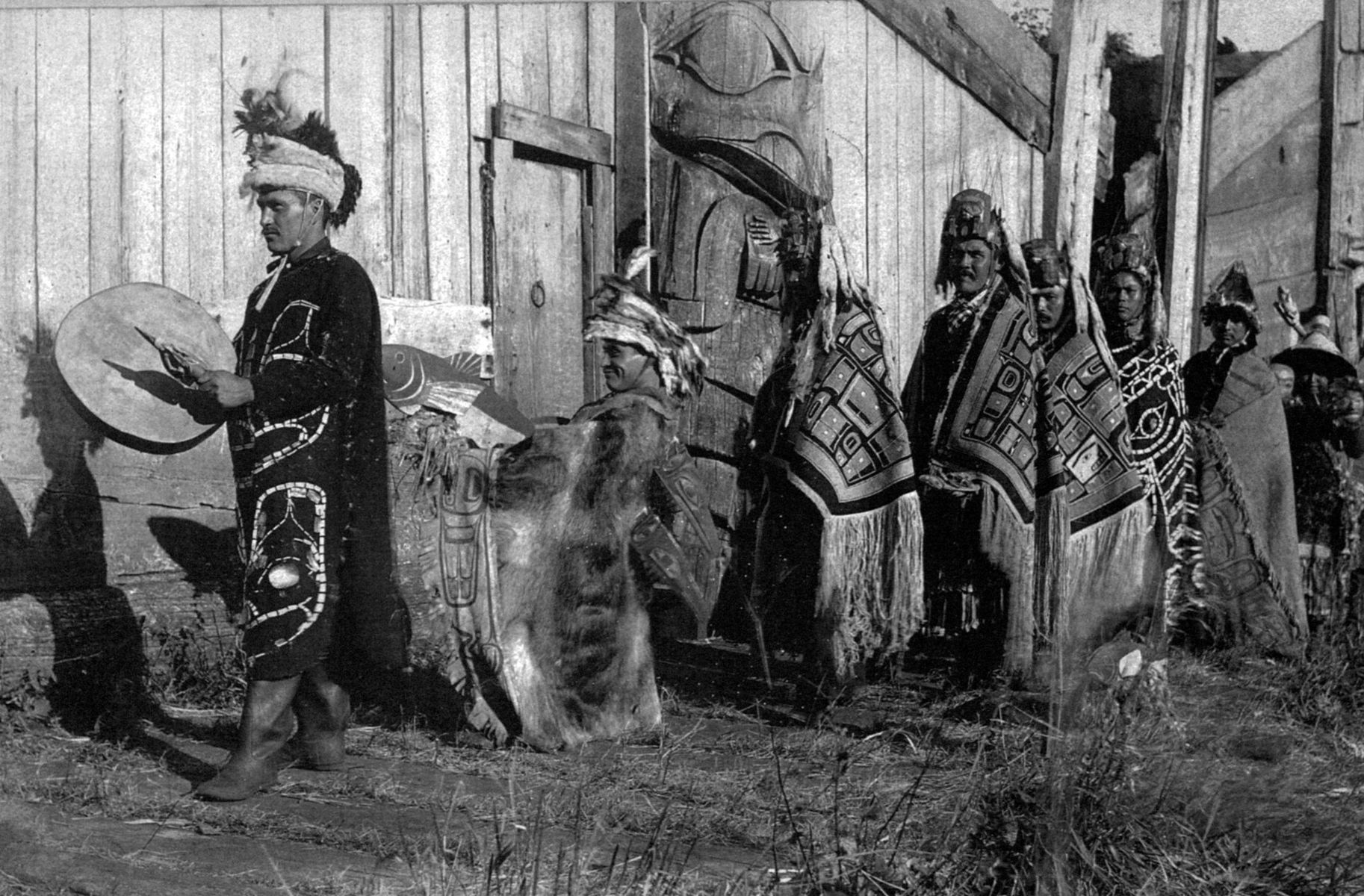The Haida Tribe is a Northwest Indian Tribe that resided in Haida Gwaii, which is an archipelago off the coast of British Columbia, Canada. They have lived in the same location for thousands of years.

They have been compared to the Vikings in Europe due to their skills in trade, craftsmanship, and seamanship. They also practiced slavery, which was typical if they defeated a rival tribe in battle. Slavery was common in Native American culture. Some empires, such as the Aztecs, had a large percentage of slaves.
Jump to:
History of the Haida Tribe
The Haida tribe is one of the oldest tribes in Native American history. This is probably due to their location and ability to adapt to the resources around them.
The first recorded contact between the Haida and Europeans was in July of 1774 with Spanish explorer Juan Pérez, who was sailing north on an expedition to find and claim new territory for Spain. For two days in a row, the Santiago sat off the shore of Haida Gwaii, waiting for the currents to settle down enough to allow them to dock and set foot on land. While they waited, several canoes of Haida sailed out to greet them and ultimately to trade with Pérez and his men.
After two days of poor conditions, however, the Santiago was ultimately unable to dock, and they were forced to depart without having set foot on Haida Gwaii.
The Haida were excellent at trade and traded with many European powers at the time. This would include Russia, Spain, and England. As America developed and migrated west, the United States began to trade with the Haida as well.
Trade for sea-otter pelts was initiated by British Captain George Dixon with the Haida in 1787. The Haida did well for themselves in this industry, and until the mid-1800s, they were at the center of the profitable China sea-otter trade.
Although they had gone on expeditions as far as the state of Washington, at first, they had minimal confrontations with Europeans. Between 1780 and 1830, the Haida turned their aggression towards European and American traders. Among the dozens of ships the tribe captured were the Eleanor and the Susan Sturgis. The tribe made use of the weapons they so acquired, using cannons and canoe-mounted swivel guns.
In 1857, the USS Massachusetts was sent from Seattle to nearby Port Gamble, where indigenous raiding parties made up of Haida (from territory claimed by the British), and Tongass (from territory claimed by the Russians) had been attacking and enslaving the Coast Salish people there. When the Haida and Tongass (sea lion tribe Tlingit) warriors refused to acknowledge American jurisdiction and to hand over those among them who had attacked the Puget Sound communities, a battle ensued in which 26 natives and one government soldier were killed.
In the aftermath of this, Colonel Isaac Ebey, a US military officer and the first settler on Whidbey Island was shot and beheaded on 11 August 1857 by a small Tlingit group from Kake, Alaska, in retaliation for the killing of a respected Kake chief in the raid the year before.
Ebey's scalp was purchased from the Kake by an American trader in 1860.
Smallpox
All of the natives in America dealt with European/American disease.
While most Northeast Indian Tribes and Mexican tribes had already gone through smallpox that destroyed much of their population, the Northwest Indians had not suffered due to less contact with Europeans.
This changed during the 1862 Pacific Northwest Smallpox Epidemic.
In 1862, an infected passenger from San Francisco arrived in Victoria aboard a steamship. The disease was highly contagious and quickly spread throughout the native population. The Haida tribe was affected by the epidemic and lost much of its population. It is estimated that the population of the Haida tribe prior to smallpox was around 6,600, and after smallpox ravaged them, their population was reduced to around 830.
This drop-in population destroyed the once-powerful tribe and created a vacuum that would be filled with colonists.
Today
In December 2009, the government of British Columbia officially renamed the archipelago from Queen Charlotte Island to Haida Gwaii. The Haida tribe asserts Haida's title over all of Haida Gwaii and is pursuing negotiations with the provincial and federal governments.
Haida authorities continue to pass legislation and manage human activities in Haida Gwaii, which includes making formal agreements with the Canadian communities established on the islands.
Haida efforts are largely directed to the protection of land and water and functioning ecosystems, and this is expressed in the protected status for nearly 70% of the million-hectare archipelago. The protected status applies to the landscape and water as well as smaller culturally significant areas.
They have also forced a reduction of large-scale industrial activity and the careful regulation of access to resources.
